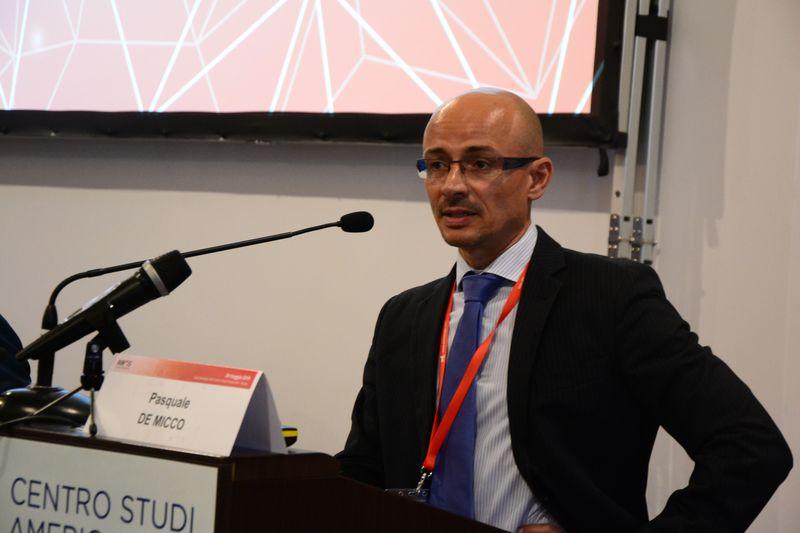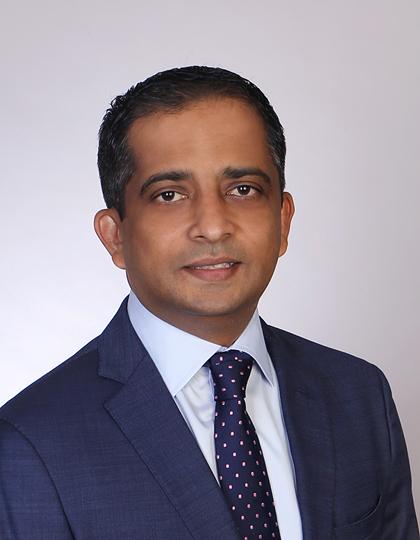
While the world has been fighting the prolonged Covid-19 pandemic, the global emergency posed by climate change is growing more alarming. Powerful nations are rolling out plans and policies to weather the crisis and hoping to bring the rest of the world into line.
On his first day in the White House, President Joe Biden signed an order to have the United States rejoin the Paris Climate Agreement -- highlighting the urgency of keeping the rise in global temperature below 1.5 degrees Celsius above pre-industrial levels.
And despite the two superpowers' geopolitical and economic differences, China accepted the invitation to President Biden's virtual climate summit in April -- affirming that it is on board with the global community in tackling growing climate threats.
As the world's top carbon emitter, China is on the frontline of combatting climate change, but so too is the entire developing East Asia and Pacific region.
The region is home to 2.1 billion people -- 27% of the global population -- and accounting for just under 20% of global gross domestic product (GDP), yet it produces 33% of global greenhouse gas emissions, according to the World Bank's latest East Asia and Pacific Economic Update in April.
Last year, China pledged to hit peak emissions by 2030 and to become carbon-neutral by 2060. Japan and South Korea have promised to achieve carbon neutrality by 2050.
"2021 is the make-or-break year," says Grace Fu, Minister for Sustainability and the Environment of Singapore, quoting a remark by United Nations Secretary-General António Guterres.
Mr Guterres has been rallying support ahead of the next global climate summit scheduled for November in Glasgow, Scotland. At the event known as COP 26 (26th Conference of the Parties), participating countries are expected to commit to enhanced goals beyond what they agreed to in Paris five years ago.
Ms Fu points out that the effects of the pandemic have not been limited to public health and economic growth. The world has seen greater environmental impact from increased disposal of items such as face masks and medical gear, as well as packaging.

"Change climate risk … is no longer a question of if. It's really a question of how much," says Grace Fu, minister for Sustainability and the Environment of Singapore. SUPPLIED
"The world continues to feel the impact of climate change," she said, adding the extreme weather events are being seen more frequently, including more intense storms and longer droughts.
In February, The US faced historically harsh winter storms causing extensive property damage and casualties. In recent weeks, western Canada and the northwestern US endured an unprecedented heatwave with a record-breaking temperature of 49.6C reached near Vancouver. The deadly heat has been responsible for nearly 500 deaths in western Canada.
"Climate change risk … is no longer a question of if. It's really a question of how much," Ms Fu said at a recent webinar entitled "Positioning Agribusiness and Forestry for the Future: Turning Risk into Opportunity", hosted by the Singapore Institute of International Affairs.
"We know that even if we stop adding on to carbon emissions, global warming has already reached a certain level that it's almost irreversible," she said. "It's really worthwhile to start thinking about both mitigation and adaptation, and Singapore is doing just that.
"There are opportunities for countries to chart pathfinding approaches to address climate change and sustainability while balancing economic growth and pandemic recovery."
The term pathfinder, she noted, has its origin in the military, signifying someone who "works in unfamiliar territory, and sometimes at great risk".
"Similarly, addressing sustainability requires governments to operate in uncharted territories, identify and test new technologies, redesign cities for greater resilience and smaller carbon footprints, and develop deployment roadmaps that partner with the corporate and people's sectors for action."
Singapore has launched Singapore Green Plan, "a whole-of-nation movement to realise a net-zero emissions aspirations and advance the national agenda on sustainable development" and fulfil the city-state's obligations under the Paris Agreement.
Its key targets include adding more parks and planting one million more trees, quadrupling solar deployment by 2025, reducing waste sent to landfills by 30% by 2030, ending registrations of new diesel cars and taxi from 2025, and registering cleaner-energy transport from 2030.

EU COMMITMENT
The European Union (EU) is equally determined to ensure the success of its European Green Deal -- its new growth strategy to make Europe a net-zero emission economy by 2050. Its Emissions Trading Scheme (ETS) is seen as a key tool to reduce greenhouse gas emissions cost-effectively.
The ETS works on a cap-and-trade system. The cap is the limit on greenhouse gas pollution, which will get stricter over time. Within the cap, producers auction or receive emission allowances that can be traded with others. There are penalties for violations as well.
The programme covers energy- intensive industries such as cement, steel, aluminium, glass and ceramics, pulp, paper, oil refineries, the aviation sector, and electricity and heat generation.
However, it only covers emissions generated by producers in the applicable geographical areas including all EU countries as well as Iceland, Liechtenstein and Norway. It doesn't cover emissions embedded in imported goods and services -- that figure represents 20% of carbon emissions in the EU and is constantly growing.
It's conceivable that producers might shift operations to other jurisdictions with weaker climate policies to avoid having to pay the cost of acquiring certificates. That might lead to "carbon leakage".
To prevent such a situation the EU in 2019 introduced the Carbon Border Adjustment Mechanism (CBAM).
"It aims to avoid carbon leakage … to avoid European companies moving to other jurisdictions where the climate rules are lighter than in the EU," explained Pasquale De Micco, policy officer with the Directorate-General for Taxation and the Customs Union of the European Commission.

"Sustainability of palm oil is actually already in place. … The issue is how are we going to mainstream these good practices to everybody," says Agus Purnomo, managing director for sustainability and stakeholder engagement of Golden Agri-Resources. SUPPLIED
"We will apply a system whereby European companies (producing in other jurisdictions) are treated like foreign companies. When they export to Europe the products will be treated in the same way," he noted.
"We hope that everyone will adopt ambitious enough climate policies. If you adopt a serious climate policy equivalent to ours, you won't have to pay any border adjustment. That's the aim of the system," he said at the panel discussion.
Despite the good intentions, the mechanism might be perceived as penalising EU trading partners, especially developing countries that have weaker climate policies.
The CBAM is still being fine-tuned and is expected to be announced this month as part of the "Fit for 55" package, which aims to cut EU emissions by 55% by 2030. Mr De Micco indicated there could be three possible solutions.
The CBAM could either impose a carbon tax on products, both imported and domestically produced, that are at risk of carbon leakage, or apply a tariff or duty. The third option could be to make the CBAM will an extension of the existing ETS. "Importers will have to buy similar certificates to compensate for the embedded emissions in their product," he said.
"We are doing a lot on dialogue, especially with third countries, to avoid the disproportionate effect in order to have a compensation for environmental rules applied in third countries like in Malaysia, Indonesia and Singapore."

ASEAN PRODUCERS
In Southeast Asia, forestry and agriculture is a major emitting sector along with energy, transport and urban development. Tightened measures from regulators, coupled with greater consumer demand for sustainably sourced commodities such as palm oil, cocoa and rubber, are compelling producers in the region to meet new sustainability goals.
Palm oil is used in everything from chocolate to noodles, cosmetics, soaps and detergents, making it the most produced, consumed and traded vegetable oil in the world, according to the World Wide Fund for Nature (WWF).
It's also one of the key commodities produced in Asean with Indonesia and Malaysia the two largest producers in the world. The industry has come under heavy scrutiny because of its environmental record, including deforestation, major land-use changes as well as alleged labour abuses.
To create a sustainable palm oil industry, big companies have stepped up to do their part through adherence to global standards. However, smallholders have a role to play as they account for 40% of global palm oil production.
The problem for many years has been that meeting global standards is a costly process, and most smallholders are unable to do so unless they receive help in the form of grants or subsidies.
"We have placed sustainability in the centre of our operation," says Pratheepan Karunagaran, executive director of the Indonesia-based midstream processor and palm oil trader, Apical.

"If you adopt a serious climate policy equivalent to ours, you won't have to pay any border adjustment. That's the aim of the system," says Pasquale De Micco, policy officer with the Customs Union of the European Commission. SUPPLIED
Apical has been working with small and medium producers to sustainably improve their yields and to assist them to obtain certification from the globally recognised Roundtable on Sustainable Palm Oil (RSPO), which will ultimately improve the income.
It has also worked with non-governmental organisations as well as customers and other strategic partners to drive positive transformation in the supply chain through inclusion and capacity building.
However, given its complex supply chain, the "noise" around the industry persists and this might hurt producers if the CBAM comes into force across Europe.
"Ninety-nine percent of palm oil supply is sustainably traceable to its origin," said Mr Karunagaran, while Mr De Micco noted the new mechanism would not include palm oil in its early stage. But that doesn't stop a country from banning it.
Belgium has already announced it will ban palm oil and soy oil for use in biodiesel starting in 2022, sparking concerns among producers in Southeast Asia and West Africa.
"These fuels, apart from having little or no advantage over conventional fossil fuels from a climate point of view, lead to deforestation, loss of biodiversity, and even human rights violations," said Zakia Khattabi, Belgium's environment minister.
The industry was "a bit dismayed" when it heard of the ban, said Agus Purnomo, managing director for sustainability and stakeholder engagement for Singapore-listed Golden Agri-Resources, one of the biggest palm oil traders in the world.
Regulators, producers and consumers need to sit down together and discuss how to move forward, in his view.
"It's a problem when you have surprises coming from one part of the market and we have difficulty understanding how to move forward," said Mr Purnomo.
"Sustainability of palm oil is actually already in place. There are certificates and systems and ways to audit it," he added, acknowledging that "the issue is, how are we going to mainstream these good practices to everybody, as producers have, unfortunately, different levels of ability."

"It's important that we clearly understand within our system that sustainability is a shared responsibility," says Pratheepan Karunagaran, executive director of the Indonesia-based midstream processor and palm oil trader Apical. SUPPLIED
SHARED RESPONSIBILITY
While there is no uniform policy approach to drive low-carbon and sustainable development, there is a broad set of policy options available based on each country's circumstances, according to the World Bank.
The choices include phasing out fossil fuels and energy subsidies, adjusting carbon prices, fostering green public investment in low-carbon and resilient infrastructure and innovation, and undertaking low-carbon policy reforms in key sectors, such as energy, transport, agriculture, land use and urban planning.
"Carbon pricing is an effective but currently underutilised policy tool to drive efficient and economy-wide abatement in the East Asia and Pacific region," said the World Bank report. Forms of carbon pricing include a carbon tax and the ETS approach.
Transitions toward green growth can cause labour dislocation and financial loss, a reality that policymakers have to weigh carefully. Ensuring a fair transition by comprehensively addressing negative impacts is a key so that workers in carbon-intensive sectors have a social safety net and can be retrained in essential skills to find alternative employment.
For the palm oil industry, Both Mr Purnomo and Mr Karunagaran agreed that everyone in the system has a role to play.
"It's important that we clearly understand within our system that sustainability is a shared responsibility," Mr Karunagaran said. "Multi-stakeholder collaboration is very important."
Regulators need to standardise frameworks and certification schemes to ensure there are programmes in place to incentivise sustainability-based practices, and to help smallholders in particular to comply.
Financial institutions can work with larger companies on sustainability-based financing as well as provide microfinance to assist small famers.
Producers and suppliers, meanwhile, need to ensure a transparent, traceable oil supply chain by monitoring, assisting and supporting both small and medium-size producers, Mr Karunagaran said.
At the same time, he said, consumer companies Procter & Gamble and Unilever will have to "improve the understanding of sustainable palm oil within their customer base as well as to work together to improve the market uptake of certified products".